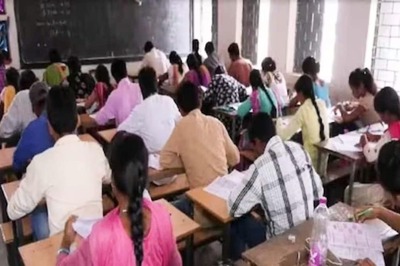
views
CHENNAI: In the 24 hours that followed Markandeyan’s death — the first custodial death in Tamil Nadu since the change in regime — the State machinery acted swiftly. Madurai Superintendent of Police Asra Garg suspended sub-inspector Jayaraman, head constable Solai Kannan, constable Murugan and sub-inspector Radha Magesh at the Oomachikulam police station and ordered departmental enquiry. He also reported the incident to the National Human Rights Commission while District Collector U Sahayam ordered a judicial probe into the alleged case of custodial death, according to C J Rajan, Director, Tamil Nadu Programme on Human Rights and Democracy.But it remains to be seen whether such quick action will extend itself to ending Tamil Nadu’s gory legacy of custodial torture and death. Not counting Markandeyan, 47 people have died in police custody in this State over the past five year. Six of those deaths took place in Chennai and Vellore each. Cuddalore had five deaths and Tirunelveli three. The districts of Tiruppur, Coimbatore, Ariyalur, Erode, Thoothukudi, Perambur and Dindigul also find themselves on this map of infamy.Over time, narratives of police torture have become part of pop culture, a norm in cinema and even a matter of jokes: “If the TN police can’t catch a bear, they will catch a dog and beat it till it ‘confesses’ it’s a bear”. Funny, right?What is not funny is that, according to Rajan, none of the police personnel involved in any of the 47 deaths have been booked under the law. Worse is what these 47 people are believed to have undergone before they died. The police’s favourite methods of torture are said to range from beating, suspension (with arms and legs twisted), forced immersion of a person’s head in faecal matter or other debris, sexual violence, forcing the person to stand for long hours, electric shocks, stripping the person naked or putting needles into the person’s tongue or nails. Rajan adds that the Oomachikulam police station (where Markandeyan died), like some stations located in remote places in the city, are notorious for being sites of torture.The police admit that there is a high prevalence of torture in police stations. On the condition of anonymity, a police officer revealed that policemen resort to torture when there is pressure from senior officers or their political masters. On the other hand, if the accused was believed to have committed gruesome crimes such as raping a minor girl and causing injury to her genitals, the police might torture the person to death and dump the body in an isolated place. “The next day, we will book a case stating an unknown body was found on the road and finish off the matter,” said a police officer, adding that it was a regular practice in the department.Police personnel are trained to beat an accused on certain parts of the body (legs and buttocks), and hang the person upside down for questioning. “Sometimes, weak persons are unable to withstand the torture but if we are given the green light to finish off a person, the beast in us emerges and we beat the person to death,” the officer said.No wonder then, that the shooting of Mohanraj in Coimbatore last November raised questions about the police version of events. Mohanraj had allegedly kidnapped a boy (7) and a girl (10), sexually assaulted the girl, and thrown them into a river. According to the police, he was being taken to a reconstruction of the crime early in the morning, when Mohanraj grabbed a gun and opened fire injuring two sub-inspectors in the process. The police claimed they had been forced to shoot him dead in self defence.Though torture by the police and military forces has existed from before Independence, the State police began resorting to torture in in earnest in the 1970s while tracking down Naxalities. The Special Task Force too was known to have tortured people during their hunt for forest brigand Veerappan.Antony Muthu Aruldass of Bhavani was one such victim of the STF. He said that the police detained him in July 1993, kept him in illegal custody and tortured him for 18 long days. “I have no connection with Veerappan, but they tortured me to make me say that I had supplied him with explosives,” he recalled. He said he had been tortured in many ways over those 18 days but one method that stood out was the ‘aeroplane torture.’ They would tie my limbs to four ropes and hang me in the air and beat me. They also gave me electric shocks,” he said.Other forms of torture that Aruldass had seen or heard of included police attaching one end of a wire to an arrested woman’s vagina and the other end to an arrested man’s penis so they could give both the persons an electric shock at the same time. On several occasions, arrested women had been gang raped, he said.The practice of custodial torture soon spread across the entire department and local police stations started using it. To make matters worse, the National and State Human Rights Commission failed to address custodial deaths with the seriousness it deserved, Rajan said. “Instead of taking suo motu action on custodial deaths, the Commissions wait for victims’ families to approach them. Even if they were to complain to the Commission, instead of investigating the case properly, the Commission would make the victims’ kin travel to Chennai endless times. They gradually lose interest,” Rajan explained.Ironically, in spite of People’s Watch, a human rights advocacy group, having submitted reports on the 47 custodial deaths, that had taken place in the past five years, to the National Human Rights Commission and the State Human Right Commission, the rights bodies were sleeping on the cases, Rajan maintained.




















Comments
0 comment